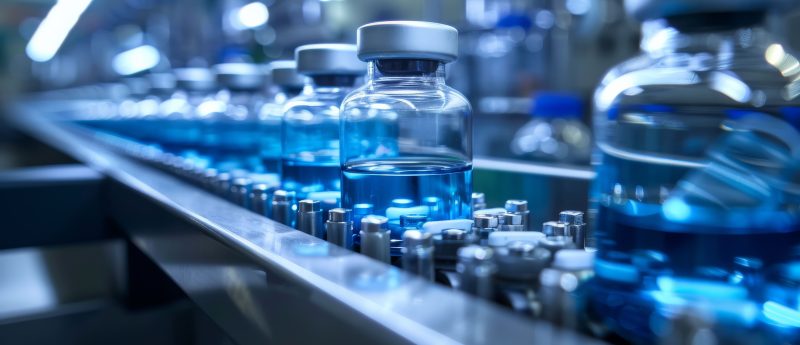An author’s perspective: Jasper Stevens on improving real-world UHPLC–MS/MS iohexol analysis

Author: Jasper Stevens, Post-doctoral researcher, University Medical Center Groningen (Netherlands)
 Jasper Stevens is a researcher at the Department of Clinical Pharmacy and Pharmacology at the University Medical Center Groningen (UMCG; Groningen, Netherlands). After receiving his PhD in Pharmacology from Leiden University in 2011 (Leiden, the Netherlands), Jasper joined Indiana University-Purdue University Indianapolis (IUPUI) (IN, USA) as a Postdoctoral Fellow. Jasper worked as a Pharmacometrician at the Centre for Human Drug Research (Leiden, Netherlands), prior to starting his current position at UMCG in 2016. His main research interests include individualized treatment strategies and finding novel approaches to measure and halt the progression of renal and cardiovascular disease in patients. To achieve these goals, he is actively involved in clinical trials and the clinical trial design within international consortia like PROTON and PRIME-CKD.
Jasper Stevens is a researcher at the Department of Clinical Pharmacy and Pharmacology at the University Medical Center Groningen (UMCG; Groningen, Netherlands). After receiving his PhD in Pharmacology from Leiden University in 2011 (Leiden, the Netherlands), Jasper joined Indiana University-Purdue University Indianapolis (IUPUI) (IN, USA) as a Postdoctoral Fellow. Jasper worked as a Pharmacometrician at the Centre for Human Drug Research (Leiden, Netherlands), prior to starting his current position at UMCG in 2016. His main research interests include individualized treatment strategies and finding novel approaches to measure and halt the progression of renal and cardiovascular disease in patients. To achieve these goals, he is actively involved in clinical trials and the clinical trial design within international consortia like PROTON and PRIME-CKD.
- Please could you provide a brief summary of your paper?
Our manuscript reports on an extension of a validated UHPLC–MS/MS iohexol analysis, in addition to the standard FDA and EMA guidelines on bioanalytical method validation in plasma and urine samples. We show that human EDTA plasma samples can be stored up to 9 weeks at room temperature, 4°C, 37°C and 37°C with 55°C daily temperature spikes. The samples can be analyzed using a two-point calibration curve and are partially validated for serum-, heparin plasma-, urine-, EDTA whole blood-, and lithium-whole blood iohexol samples.
- What inspired you and your team to revisit and improve the existing UHPLC–MS/MS method for iohexol analysis?
Measurement of glomerular filtration rate (GFR) is a necessity in diagnosis and monitoring of kidney function in patients with kidney disease, as well as identification of potential kidney donors. As an expertise center for kidney function measurement, our analytical lab receives iohexol samples for analysis and GFR calculation from various (clinical) research centers and hospitals worldwide. Real-world poses several issues that would render the received samples useless for formal analysis and, as a result, the kidney function cannot be determined for that individual.
Firstly, our previously published method proved stability of iohexol after shipping at dry-ice, storing at –20°C and with a maximum of three freeze-thaw cycles. Real-world practice shows that plasma samples sometimes arrive without dry ice, for which then back-up samples must be retrieved, if available. Based on its chemical structure and our experience, iohexol samples should be highly stable and remain stable at higher temperatures even in the case of thawed plasma samples being shipped by airplane or courier delivery van standing in the sun.
Secondly, the previously published eight-point calibration curve proved rather time-consuming, so we sought to optimize this for our clinical routine diagnosis program.
Lastly, not all centers that use iohexol for the measurement of kidney function commonly use the EDTA plasma tubes that we use in our hospital setting. It was only logical to extend the method to other frequently used matrices that our lab receives. These issues required academic proof before clinical implementation and would ensure that more samples that are sent to our lab can be used for validated measurement of kidney function.
- Can you walk us through the biggest technical hurdle you faced in optimizing the method and how you overcame it?
In a box of plasma samples without dry ice, standing on a runway or in a delivery van in the sun, temperatures can rise substantially. We were therefore also aiming for a constant temperature of 50°C. This led to such coagulation of the plasma sample within 48 hours that no fluid could be extracted from the tubes. This is obviously not an iohexol-related problem, but simply applies to any sample stored at prolonged temperatures above 50°C. Exposing the plasma samples to a temperature of 55°C for 2 hours every weekday allowed for extraction and iohexol analysis and thus seemed fit for the purpose of testing the stability of iohexol at extreme temperatures while the plasma sample itself would not be destroyed.
- What are the practical implications for clinical labs and future studies now that the method accommodates thawed samples and diverse matrices?
The most important clinical implication is that in thawed plasma samples, we can still formally quantitate the kidney function as this now falls within the range of our assay. This greatly increases the success rate of GFR measurement for patients, donors and study participants. Moreover, our work implies that there is actually no need for costly dry-ice shipping of samples for the analysis of iohexol. Also, clinical labs are no longer forced to sample blood specifically in EDTA-plasma tubes but can use the tubes they are accustomed to working with.
- How do you see regulatory expectations evolving in response to innovations like this?
I expect there will be a need for streamlining the FDA and EMA guidelines when it comes to the differences in guidelines for drug development and drug registration versus clinical diagnostics and assays, i.e., at the time of writing this article, only ISO-15189 and the In Vitro Regulation were in place for clinical practice, however no further guidelines yet.
- What’s the next step for this research? Do you foresee further method refinements or potential integration into routine diagnostics?
For now, I think we have tackled most of the refinements that can be expected from an analytical perspective focused on clinical implementation. We have incorporated the analytical method in our clinical routine diagnostics program, although there is room for further automation of the iohexol and GFR results in electronic health records and electronic case report forms. For preclinical research however, our methods for the measurements of iohexol in goats and pigs may be refined in the future or extended to validation in other species.
Disclaimer: the opinions expressed are solely those of the author and do not express the views or opinions of Bioanalysis Zone or Taylor & Francis Group.


